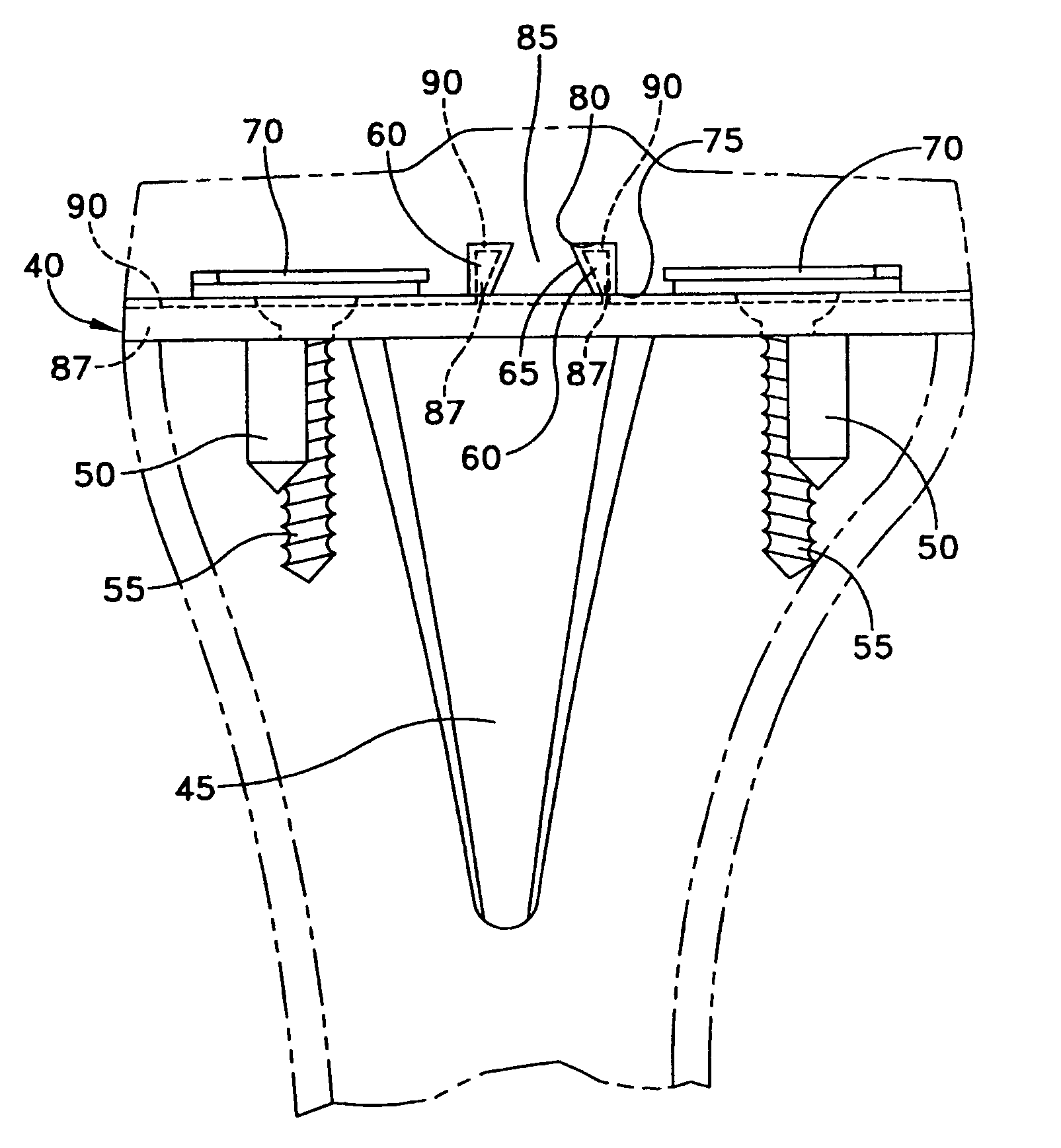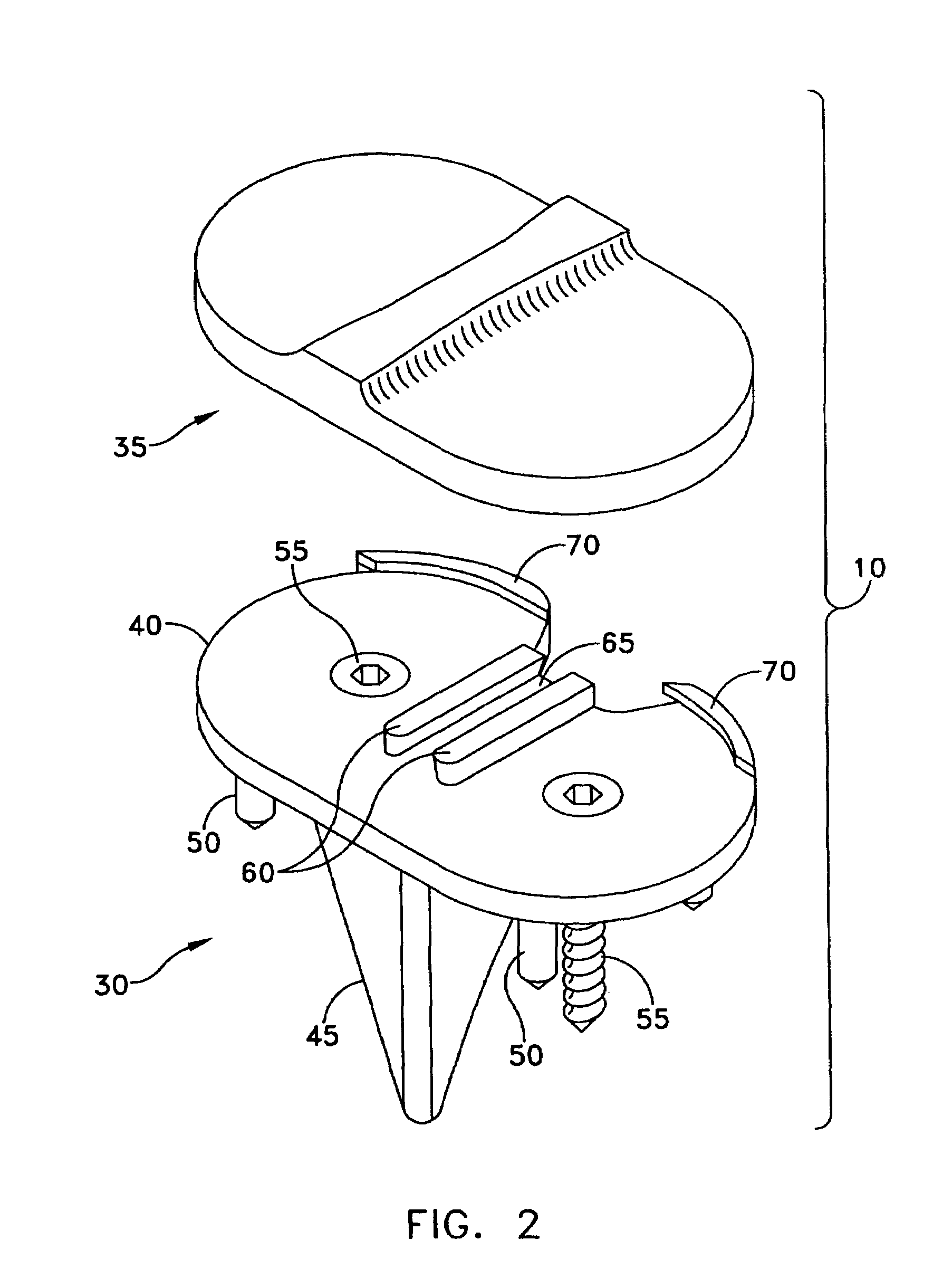Bimetal tibial component construct for knee joint prosthesis
a tibial component and construct technology, applied in the field of surgical equipment and procedures, can solve the problems of inability to use teflon “tmj” replacements, inability to meet the needs of patients, and inability to meet the needs of patients, and achieve superior bone-engaging, superior bone-engaging, and superior bone-engaging effects
- Summary
- Abstract
- Description
- Claims
- Application Information
AI Technical Summary
Benefits of technology
Problems solved by technology
Method used
Image
Examples
Embodiment Construction
[0035]Looking first at FIG. 1, there is shown a prosthetic total knee joint 5 which generally comprises a prosthetic tibial component 10 secured to the top end of a resected tibia 15, and a prosthetic femoral component 20 which is secured to the bottom end of a resected femur 25.
[0036]Prosthetic tibial component 10 is shown in greater detail in FIGS. 2 and 3. Prosthetic tibial component 10 generally comprises a metal base construct 30 and a polyethylene bearing construct 35.
[0037]More particularly, metal base construct 30 comprises a base plate 40, a stem 45 and a plurality of pegs 50 descending from base plate 40, a plurality of screws 55 passing through base plate 40, a pair of rails 60 running along the top surface of base plate 40 and defining a groove 65 therebetween, and a pair of end walls 70 connected to base plate 40.
[0038]Polyethylene bearing construct 35 comprises a flat bottom surface 75 having a longitudinally-extending recess 80 in which is disposed a longitudinally-ex...
PUM
 Login to View More
Login to View More Abstract
Description
Claims
Application Information
 Login to View More
Login to View More - R&D
- Intellectual Property
- Life Sciences
- Materials
- Tech Scout
- Unparalleled Data Quality
- Higher Quality Content
- 60% Fewer Hallucinations
Browse by: Latest US Patents, China's latest patents, Technical Efficacy Thesaurus, Application Domain, Technology Topic, Popular Technical Reports.
© 2025 PatSnap. All rights reserved.Legal|Privacy policy|Modern Slavery Act Transparency Statement|Sitemap|About US| Contact US: help@patsnap.com



